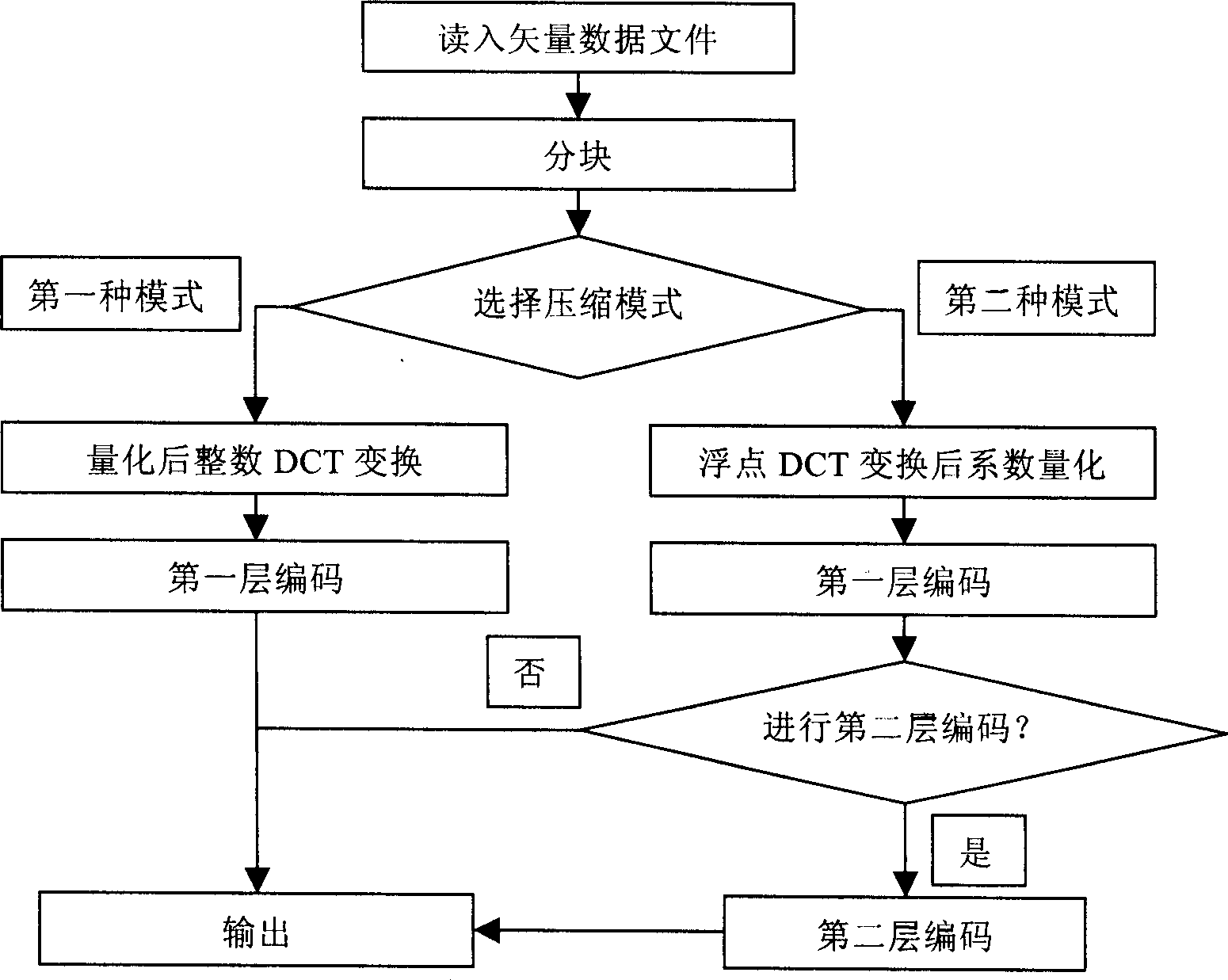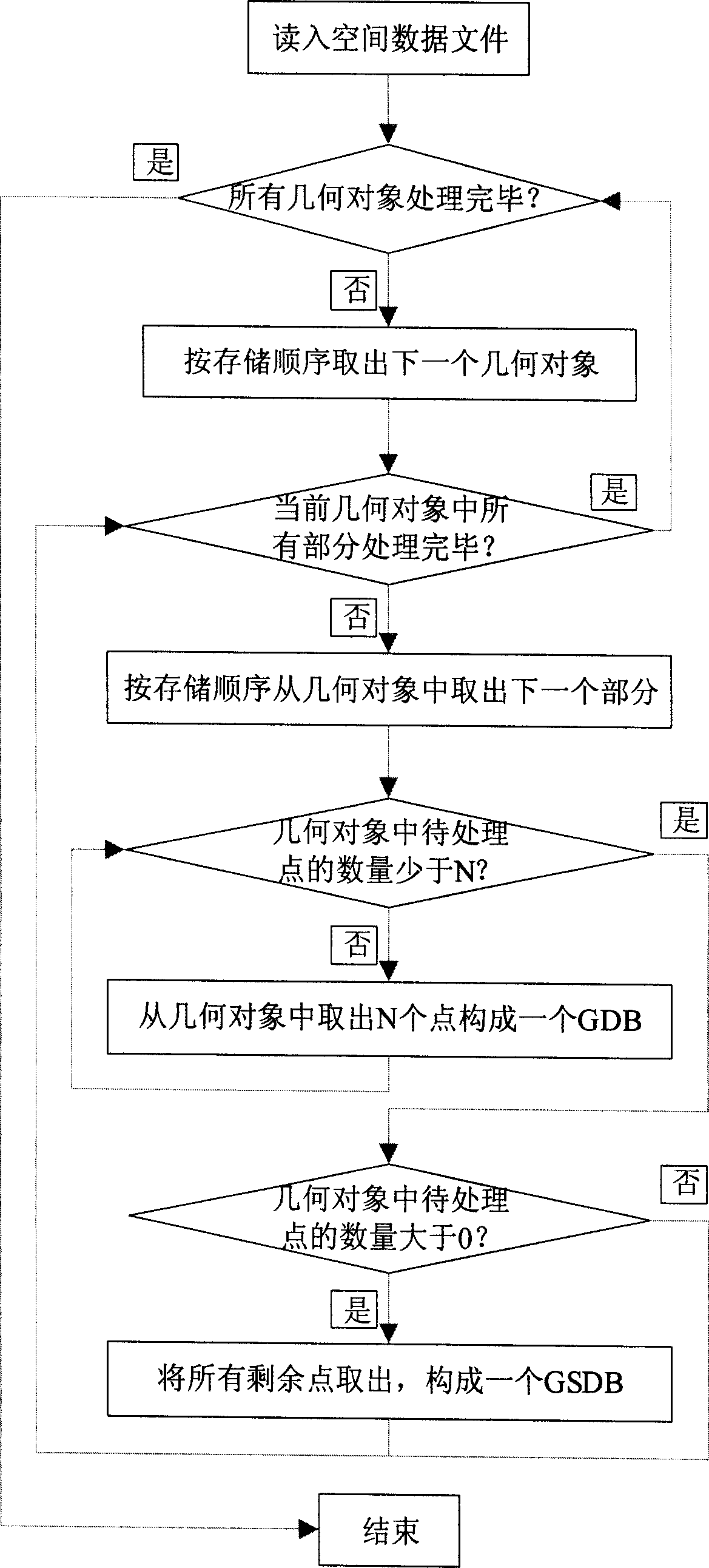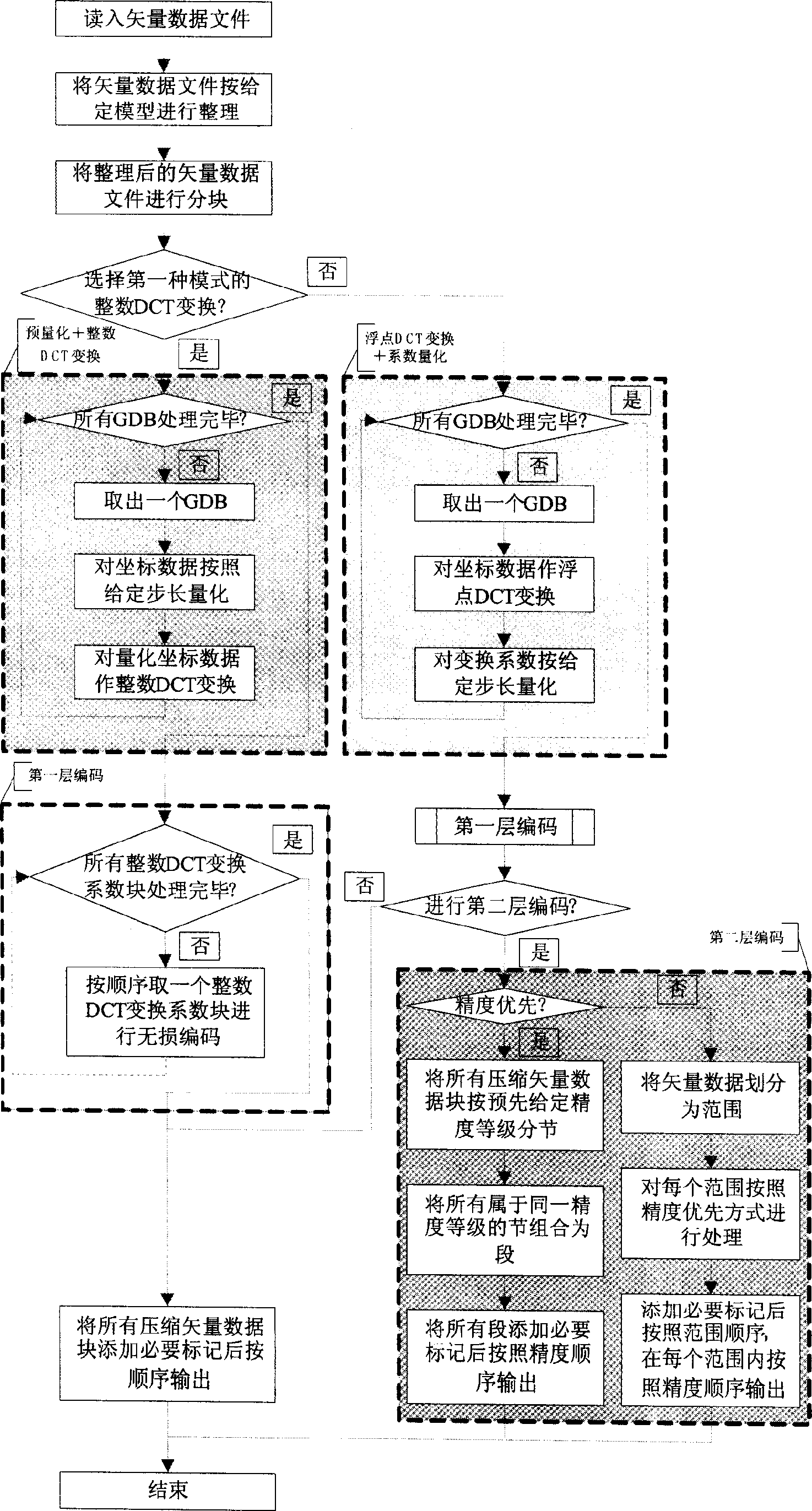Two-dimensional vector data compression method
A vector data and two-dimensional vector technology, applied in the field of information processing, can solve the problems of two-dimensional vector data compression distortion, no systematic method, no in-depth research, etc.
- Summary
- Abstract
- Description
- Claims
- Application Information
AI Technical Summary
Problems solved by technology
Method used
Image
Examples
Embodiment Construction
[0036] The present invention will be further described below in conjunction with example and accompanying drawing.
[0037]The present invention is a method for compressing two-dimensional space vector data, specifically: first divide the original vector data into vector data blocks, then perform lossy compression on the vector data blocks based on DCT transformation according to one of two modes, and then compress the vector data blocks based on DCT transformation The obtained DCT transform coefficients are entropy encoded to obtain compressed vector data blocks, and finally all compressed vector data blocks are organized into a binary bit stream of a specified format, figure 1 It is the basic flowchart of the compression method in the present invention.
[0038] The present invention adopts the following steps to compress the two-dimensional vector data.
[0039] 1. The two-dimensional vector data set is divided into vector data blocks (referred to as blocks)
[0040] 1. A...
PUM
 Login to View More
Login to View More Abstract
Description
Claims
Application Information
 Login to View More
Login to View More - R&D
- Intellectual Property
- Life Sciences
- Materials
- Tech Scout
- Unparalleled Data Quality
- Higher Quality Content
- 60% Fewer Hallucinations
Browse by: Latest US Patents, China's latest patents, Technical Efficacy Thesaurus, Application Domain, Technology Topic, Popular Technical Reports.
© 2025 PatSnap. All rights reserved.Legal|Privacy policy|Modern Slavery Act Transparency Statement|Sitemap|About US| Contact US: help@patsnap.com



